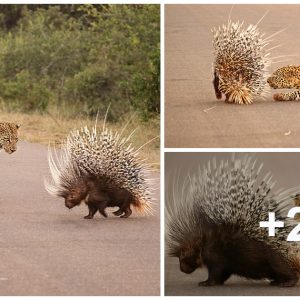For over sixty years, astronomers and astrophysicists have been engaged in the Search for Extraterrestrial Intelligence (SETI). This consists of listening to other star systems for signs of technological activity (or “technosignatures), such as radio transmissions. This first attempt was in 1960, known as Project Ozma, where famed SETI researcher Dr. Frank Drake (father of the Drake Equation) and his colleagues used the Robert C. Byrd Green Bank Telescope in West Virginia to conduct a radio survey of Tau Ceti and Epsilon Eridani.
Since then, the vast majority of SETI surveys have similarly looked for narrowband radio signals since they are very good at propagating through interstellar space. However, the biggest challenge has always been how to filter out radio transmissions on Earth – aka. radio frequency interference (RFI). In a recent study, an international team led by the Dunlap Institute for Astronomy and Astrophysics (DIAA) applied a new deep-learning algorithm to data collected by the Green Bank Telescope (GBT), which revealed eight promising signals that will be of interest to SETI initiatives like Breakthrough Listen.
Peter Xiangyuan Ma, an undergraduate researcher with the DIAA and the Department of Mathematics and Physics at the University of Toronto, led the study. He was joined by researchers from the Radio Astronomy Laboratory at UC Berkeley, the Jodrell Bank Centre for Astrophysics (JBCA), the Institute of Space Sciences and Astronomy, the International Centre for Radio Astronomy Research, the SETI Institute, and Breakthrough Initiatives. The paper that describes their findings, “A deep-learning search for technosignatures of 820 nearby stars,” recently appeared in Nature Astronomy.

Narrowband radio signals remain the most popular and sought-after technosignature because of how well radio waves propagate in interstellar space. For SETI researchers, the challenge has always been distinguishing between possible transmissions, terrestrial RFI, and radio waves from cosmic sources. For the sake of their study, Ma and his colleagues applied a Beta-Convolutional Variational Autoencoder algorithm to 820 unique targets observed by the GBT during 480 hours of on-sky observation.
“In many of our observations, there is a lot of interference,” Ma said in a Dunlap Insitute press release. “We need to distinguish the exciting radio signals in space from the uninteresting radio signals from Earth.””“In many of our observations, there is a lot of interference,” Ma said in a Dunlap Insitute press release. “We need to distinguish the exciting radio signals in space from the uninteresting radio signals from Earth.”
Ma began working on this algorithm when he was still in high school, which he hoped would accelerate SETI by streamlining the search for technosignatures. According to Ma, the algorithm combines two subtypes of machine learning – supervised and unsupervised learning – that he calls “semi-unsupervised learning.” This approach involves using supervised techniques to guide and train the algorithm to help it generalize (using unsupervised techniques) and find hidden patterns in the data with greater ease.
Since joining the Dunlap Institute, Ma and his colleagues have trained the algorithm using simulated signals to differentiate between potential signals that could be extraterrestrial in origin and human-generated interference. They also compared Ma’s algorithm to various machine learning applications, their precision and false-positive rates, and used that information to create the finished product. “I only told my team after the paper’s publication that this all started as a high-school project that wasn’t really appreciated by my teachers,” added Ma.

When applying this algorithm to the GBT data, they discovered eight new radio signals of interest from five stars located 30 to 90 light-years from Earth. These signals were overlooked by previous analyses that did not rely on machine learning. But to the SETI team, these signals are considered notable for two reasons. Dr. Steve Croft, the Project Scientist for Breakthrough Listen on the GBT, explained:
“First, they are present when we look at the star and absent when we look away – as opposed to local interference, which is generally always present. Second, the signals change in frequency over time in a way that makes them appear far from the telescope. It’s a bit like walking across a gravel path and finding a stone stuck in the tread of your shoe that seems to fit perfectly.”
When dealing with datasets containing millions of signals, some signals can have the two characteristics just by sheer chance. For this reason, the researchers are not yet convinced that the signals they observed represent extraterrestrial transmissions, even though they appear the way the team would expect. For starters, the signals were not found when the team conducted follow-up observations with the GBT of the same stars. Until more observations are conducted and the signals are detected again, they will remain signals of interest.
Dr. Cherry Ng, a research associate at the University of Toronto’s DIAA and a co-author on the paper, has been working on this project with Ma since the summer of 2020. According to Ng, machine learning is very important in a field like SETI, which is becoming increasingly dominated by big data:
“By poking the data with every technique, we might be able to discover exciting signals. I am impressed by how well this approach has performed on the search for extraterrestrial intelligence. With the help of artificial intelligence, I’m optimistic that we’ll be able to better quantify the likelihood of the presence of extraterrestrial signals from other civilizations.”

Looking ahead, Ma and his team hope to upgrade their new algorithm and apply it to other observatories and their datasets. These include radio telescopes like the MeerKAT array in South Africa and the soon-to-be-completed Square Kilometer Array (SKA), which will combine the MeerKAT and the Murchison Radio-astronomy Observatory (MRO) in Australia into a single, powerful array. With these and other instruments at their disposal, Ma says the team plans to scale their machine-learning approach in a major way.
“With our new technique, combined with the next generation of telescopes, we hope that machine learning can take us from searching hundreds of stars, to searching millions,” he said. “With our new technique, combined with the next generation of telescopes, we hope that machine learning can take us from searching hundreds of stars, to searching millions,” he said.
This new approach represents a leading candidate for accelerating SETI and other transient research into the age of data-driven astronomy. In time, SETI research might be able to keep pace with exoplanet discoveries and astrobiology studies, where every newly-detected exoplanet can be quickly examined for signs of biosignatures and technosignatures.





